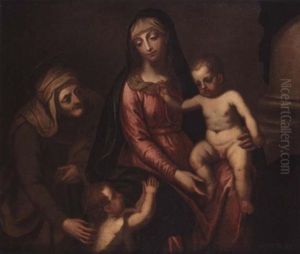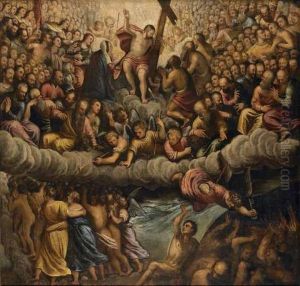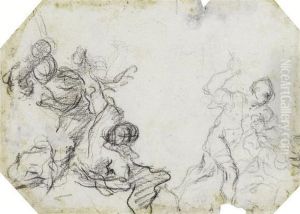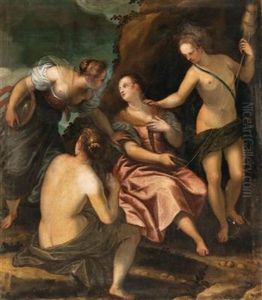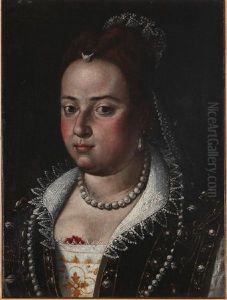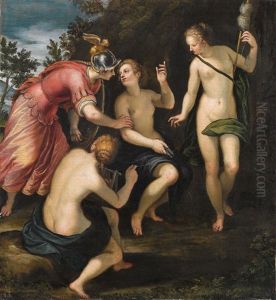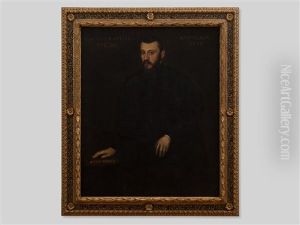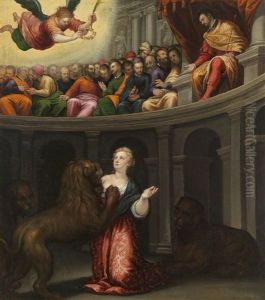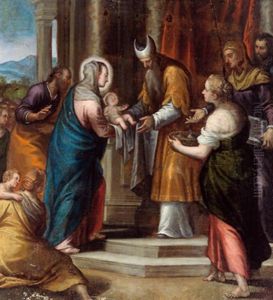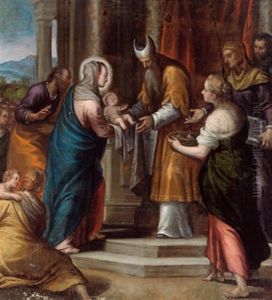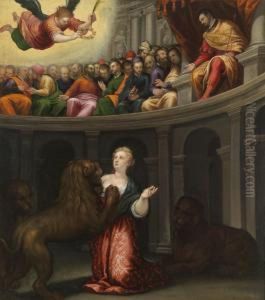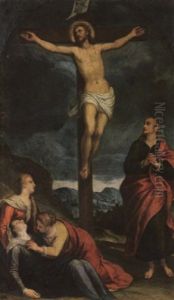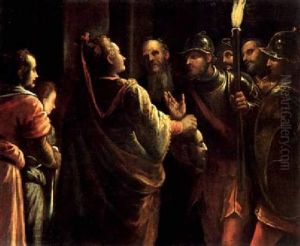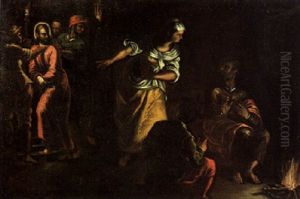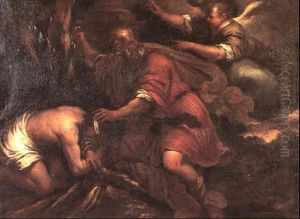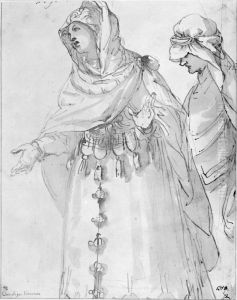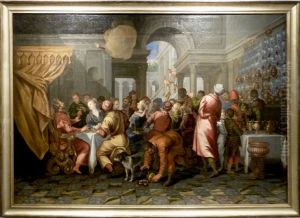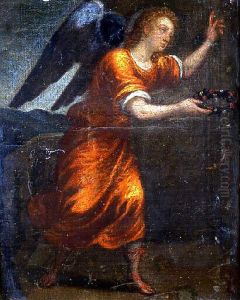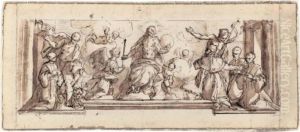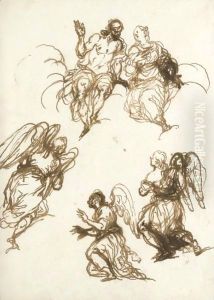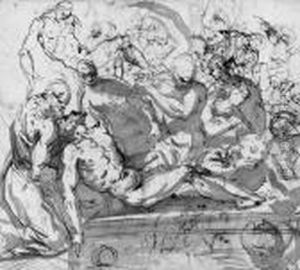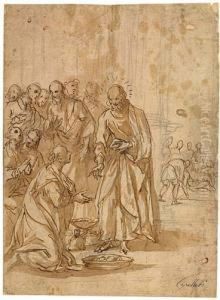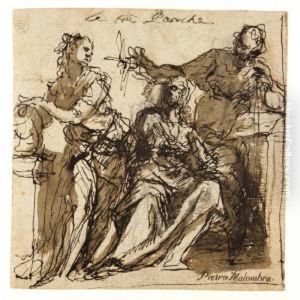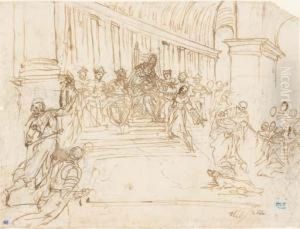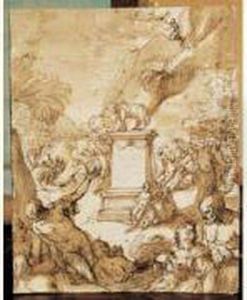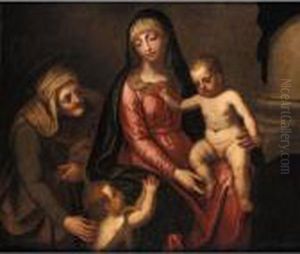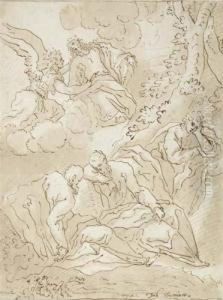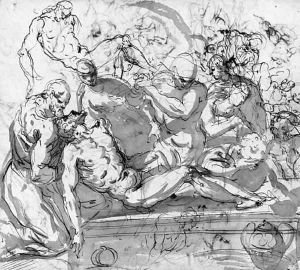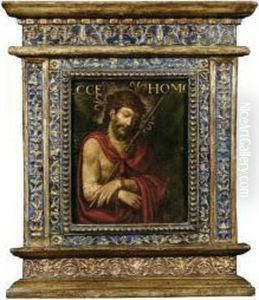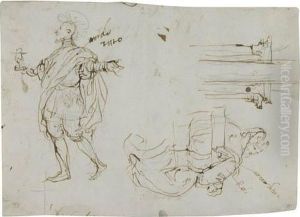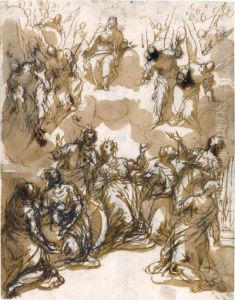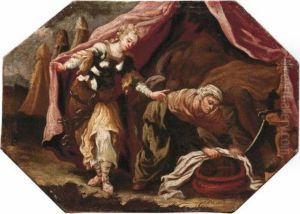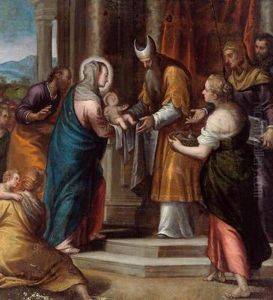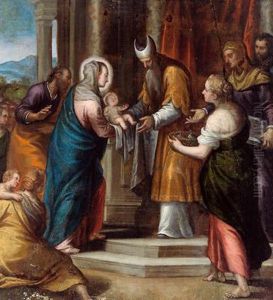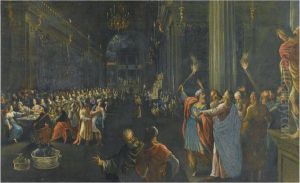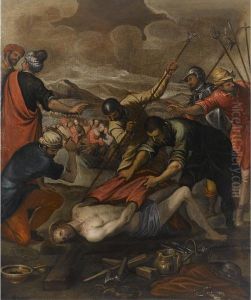Alessandro Maganza Paintings
Alessandro Maganza was an Italian painter from the late Renaissance period, active mainly in the region of Vicenza in northern Italy. Born in 1556, he was part of a family of artists, with his father Giovanni Battista Maganza being a painter as well. Alessandro is considered one of the most important representatives of the Vicentine school of painting, which was influenced by the Venetian style.
Maganza's work was characterized by its strong composition, vivid colors, and attention to detail, which were inspired by the works of the Venetian masters such as Titian, Paolo Veronese, and Jacopo Tintoretto. However, he managed to develop his own distinctive style, marked by expressive figures and dynamic forms.
He was prolific throughout his career, producing a large number of religious works, portraits, and historical paintings. Maganza was also a successful fresco painter, decorating various buildings and churches in Vicenza and its surroundings. His works include altarpieces for the churches of Santa Corona and San Lorenzo in Vicenza, and the frescoes in Villa Caldogno.
Beyond his painting, Maganza was active in the cultural life of Vicenza and played a significant role in the Accademia Olimpica, an intellectual society that was influential in the cultural and artistic development of the city during the late Renaissance.
Alessandro Maganza passed away in 1630, leaving behind a legacy that has been recognized for its contribution to the evolution of Venetian and Vicentine art. His works continue to be studied and admired for their beauty and historical significance.
